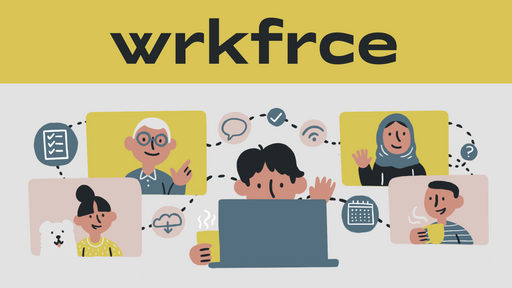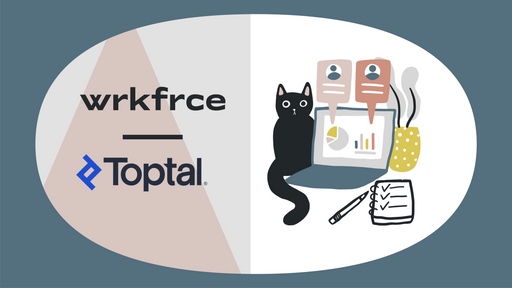Summary: Basecamp’s Office Not Required
by Sarah Archer

The global rise of reactive remote work in 2020 spawned a proliferation of playbooks published by many of the leading remote-first companies, which open-sourced the knowledge they’ve gained from years of successful fully remote operation to help other businesses follow their lead. There’s only one problem: These playbooks are loooooong. So wkrfrce has condensed them into abridged versions—CliffsNotes, if you will. Digital nomad Sarah Archer, a passionate advocate of remote and flexible work, has combed through thousands of pages of remote-first strategies to deliver the most unique, most useful, most actionable insights to help make working remotely work for you.
Remote work has been Basecamp’s core since its inception in 1999. More than 16 years later, Basecamp’s web-based project management and communication tool was valued at $100 billion.
In conjunction with this growth, the company set out to dismantle the industrial-age belief in “The Office.” As an early adopter of remote work, the 100% remote company wrote a book about the topic, which we summarize here.
How to Hire and Retain the Best Remote Talent
Hiring at Basecamp boils down to two things: talent and character.
Finding a perfect fit for a role goes beyond reviewing resumes and conducting a standard interview. Instead, finding talent means creating a hiring roadmap that allows you to evaluate who the candidates are and how they will perform.
Once a candidate becomes an employee, ensure that they’re happy at work by consistently offering support. Here are ways that Basecamp hires and retains the best talent.
- Avoid relying on a tricky recruiting process
Giving a prospective copywriter a riddle to solve won’t help you evaluate their writing skills. Ask candidates to show you concrete work evidence or results to determine if they’re a fit. - Fairly compensate good work
Even if you hire someone who lives in a city with a lower cost of living, don’t pay them less. Instead, make them feel valued by compensating them based on their position, skills, and experience. - Hire good writers
Remote workers must solve problems and settle disagreements over chat or email. Judge applications by the cover letter—applicants should explain precisely and clearly how they’re the best fit for the role and the company. - Judge applicants’ test projects, not just their resume
Test projects are crucial for accurately evaluating candidates’ work. You should task candidates with solving problems that they would experience in their role. - Meet them in person
To determine if a candidate is both a role and culture fit, consider flying them in for an informal lunch and day at headquarters (if you have one). The team needs to get a good feel for the candidate, and the candidate needs to feel comfortable with the team. - Support life changes
If a star employee needs to relocate or take extended time off, don’t be quick to cut ties. Find ways to support them, keep them on board, and adjust your schedule to theirs. Regardless of new candidates’ qualifications, they will take much longer to assume a role that someone else has been in for years. - Offer a diverse work experience
Remember the humans behind the work. When your team no longer holds weekly happy hours or office outings, work can feel lackluster. Offering financial support encourages employees to do something different, like traveling somewhere new or running a road race. Nurturing employees’ personal development will keep them engaged long term.
How to Work Remotely Like a Basecamp Employee
Life doesn’t need to split into at work/not at work. The Basecamp leadership team believes that employees should design a lifestyle that blends fun and career. For example, if working remotely means you avoid a commute, replace that with a bike ride or a passion project, not just another hour of work. Basecamp follows these principles to support successful remote work.
- Don’t follow a traditional schedule
Relaxed schedules are possible, even with time constraints. Release yourself from the nine-to-five mentality. The clock doesn’t matter. - Build a routine
Although remote work provides flexibility and freedom, you do need to nurture productive work habits. Get dressed and dedicate a work area away from distractions. - Keep work and play separate
When you use your work computer for personal activities, work-life lines can blur, and you end up overworking. If you’re lounging in your sweatpants and catching up on the news, consider using your personal tablet instead. - Work alone in a crowd
Complete isolation can make it harder to get into your workflow. Before the pandemic, Basecamp suggested that employees work from a coffee shop or a coworking space to benefit from the noise of other people working nearby. While social distancing remains the norm, consider working alongside those in your quarantine bubble such as your roommates or close family members. - Invest in tools that support your work
Basecamp recommends using Basecamp, WebEx, Know Your Team, Skype, Google Hangouts, Dropbox, and Google Docs.
How to Collaborate While Working Remotely
In an office, getting meaningful work done in small chunks between meetings, coffee chats, and conference calls can be a challenge. That’s why remote employees, who don’t have as many of these traditional distractions, are often more productive.
At the same time, you need to collaborate even though you’re not face-to-face. Here’s how Basecamp does it.
- Ensure four hours of overlap
To avoid collaboration delays and to help employees feel more like a team, Basecamp sets a standard four-hour overlap across the company. You can embrace working outside the standard 9 to 5 schedule by creating overlap across your entire team. - Collaborate on the work itself in real time
Sometimes it’s not about seeing someone’s facial expressions; it’s about seeing the project. Share your screen using tools like WebEx, GoToMeeting, and Join.me to walk everyone through what you’re working on. - Create a virtual watercooler
Use a chat program where everyone can talk about nonwork topics, post funny pictures, and have fun virtually. - Minimize the number of meetings
Meetings can be significant distractions: If you pull seven people away from their work for a one-hour meeting, you’ve just lost seven hours of productivity. Use meetings only if they clearly enhance your work. - Consider time sensitivity
In an office setting, you don’t interrupt a colleague for every single question you have. The same goes for working remotely. Use instant messaging for questions that need a quick response. Otherwise, use email to decrease interruptions and create a focused, productive workflow.
How to Transition a Team to Working Remotely
Remote work isn’t just for those who are far away—employees who are local to your physical office can benefit from working remotely, too. And moving local employees to remote work is low risk. If working remotely doesn’t pan out, employees can always return to the office.
Check out these tips for transitioning your team.
- Combat isolation through people outside work
Interaction doesn’t need to come from colleagues. Encourage your employees to connect with their friends, family, and neighbors to feel like a part of their community. And that’s still possible while quarantining—video chat with a family member or play online games with friends. - Establish reasonable expectations
With easy access to their computers, remote employees often work longer than they would in the office. Help employees establish a healthy work-life balance and encourage them to work an average of 40 hours per week. - Invest in ergonomic gear
Offer a stipend for employees to purchase a height-adjustable desk, supportive desk chair, and 27-inch, high-resolution screen to maintain back and eye health. - Walk 10,000 steps
When you’re not commuting or walking to other offices (or the copier), you don’t move as much. Proactively motivate remote workers to adopt a healthy lifestyle by setting up virtual walking groups, or by reimbursing for gym memberships or fresh fruit and vegetable deliveries. - Consider the none or all approach
If you allow one employee to test remote work without changing your processes, that’s likely not to succeed. If you offer remote work, offer it to the company or a sizable group to ensure that everyone experiences the advantages and drawbacks equally. - Create security protocols
You don’t need to sit in a cubicle with your desktop connected to company servers to keep your work safe. You can protect your data by ensuring that all remote employees use hard drive encryption and don’t use automatic logins. To further protect employee logins, save them in 1Password, introduce two-factor authentication, and ensure you can wipe all devices remotely.
How to Successfully Manage Remote Workers
Even though you are not physically present in an office, you can manage your team through technology. That said, managers shouldn’t electronically hound their direct reports—trust is essential for remote manager-employee relationships.
- Plan in-person meet-ups
Meet at least twice per year for four to five days. This time together helps employees match in-person personalities to virtual names, and allows everyone to present the latest projects and discuss the company’s future direction. - Submit daily updates
When team members are not in the same physical location, everyone needs to send daily updates to recap what everyone is working on. This can remind team members that you’re all collaborating to make progress. - Schedule regular one-on-ones
Keep a consistent and open line of communication between managers and direct reports with regular check-ins about how projects are going. - Remove roadblocks
Allow direct reports to decide for themselves instead of waiting for your go-ahead. Know that people will make mistakes, but that’s the price of learning and being independent. - Provide access by default
Every employee should be able to access the same documents so that requesting permission doesn’t slow anyone down.
One of the largest takeaways from Basecamp’s strategy is that they don’t set year-end revenue, margin, or customer target goals. Instead, they work in six-week increments and focus on short-term goals, which, for them, translate into long-term success.
Find out how other companies are approaching working remotely through our remote playbook series.









